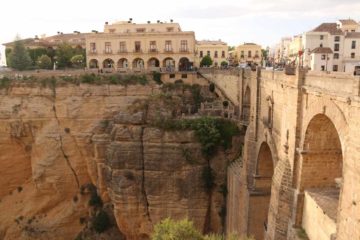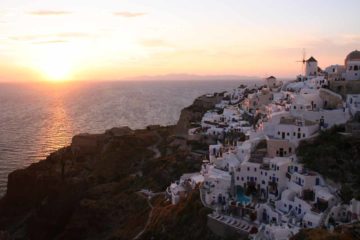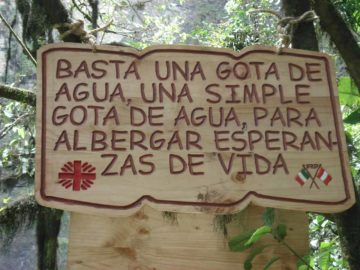About “Cascada de Ronda”
“Cascada de Ronda” (or the Ronda Waterfall) was the name that I’m dubbing this attractive waterfall, where the Río Guadalevín (Deep River) that tumbled some 25m or so beneath the impressive Puente Nuevo (New Bridge) spanning the Tajo Gorge in the old town of Ronda. I’m not even sure if this waterfall has a formal name, which is strange considering that this could very well be the signature attraction of the Andalucían town of Ronda. In fact, the photo you see at the top of this page was merely my attempt at capturing the grandeur of the falls and the gorge while numerous people before managed to capture the same thing and produced and immortalized them in one form or another whether they were on post cards, calendars, photos on the web, etc.
The Puente Nuevo that towered over the waterfall linked the old town with the new town though it wasn’t the only bridge spanning the deep and narrow gorge as further to the east in the gorge were the 16th century Puente Viejo (Old Bridge) and the 11th century Puente Árabe (Arab Bridge). The New Bridge was said to have been built in the 18th century, and I noticed there were steps leading to a lower level on the New Town side of the bridge, which I’d imagine would have been the interpretive center. It was closed during our late afternoon and early morning visits.

Continuing further down on the steps, I managed to get far enough to a point where I started to notice old walls. Apparently, these walls were known as the Murallas de la Albacara (Walls of Albacara), which were built to protect mills (molinos) within the gorge. Along these walls, there was a pair of archways (Puerta de los Molinos or the Door of the Mills and Puerta del Viento or Door of the Wind) where I took one of them (not sure which one) further down a rough and overgrown path leading closer to the ditches or water canals and possibly to the base of the waterfall itself. I only went as far down as the water canals as it started getting too overgrown to see the waterfall anymore. However, I didn’t explore much further so there could have been other hidden surprises down there, but given the number of spider webs that brushed my face, I’d imagine that not many people go down here.
A pleasant surprise for making the effort to go this far down into the Tajo Gorge from the Plaza del Campillo was that there was a natural arch across the gorge beneath the approximate location of the Paseo Blas Infante (an open area park and lookout behind the Ronda Bullring – said to be the oldest one in Spain). This tall jug handle arch didn’t seem to have any fanfare or attention devoted to it in the literature, but as you can see from the photos on this page, the natural arch was legitimate.
You can’t see the waterfall from anywhere else but this descending trail beneath the Plaza del Campillo. Once you’re back up in the town of Ronda, you’ll always be behind and above the drop of the Cascada de Ronda. And since this was a west-facing waterfall, that meant that the best light would be in the afternoon when the soft setting sun would illuminate the gorge and the New Bridge with its orangish hue on a sunny day.
Related Top 10 Lists
No Posts Found
Trip Planning Resources
Nearby Accommodations
This content is for members only. See Membership Options.Featured Images and Nearby Attractions
This content is for members only. See Membership Options.Visitor Comments:
Got something you'd like to share or say to keep the conversation going? Feel free to leave a comment below...No users have replied to the content on this page
Visitor Reviews of this Waterfall:
If you have a waterfall story or write-up that you'd like to share, feel free to click the button below and fill out the form...No users have submitted a write-up/review of this waterfall





